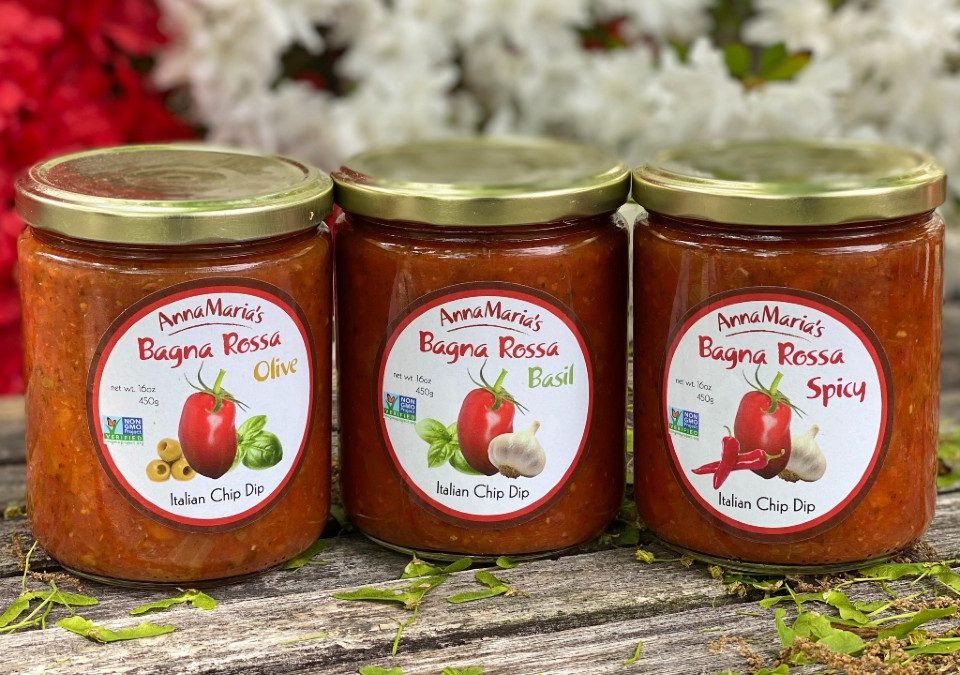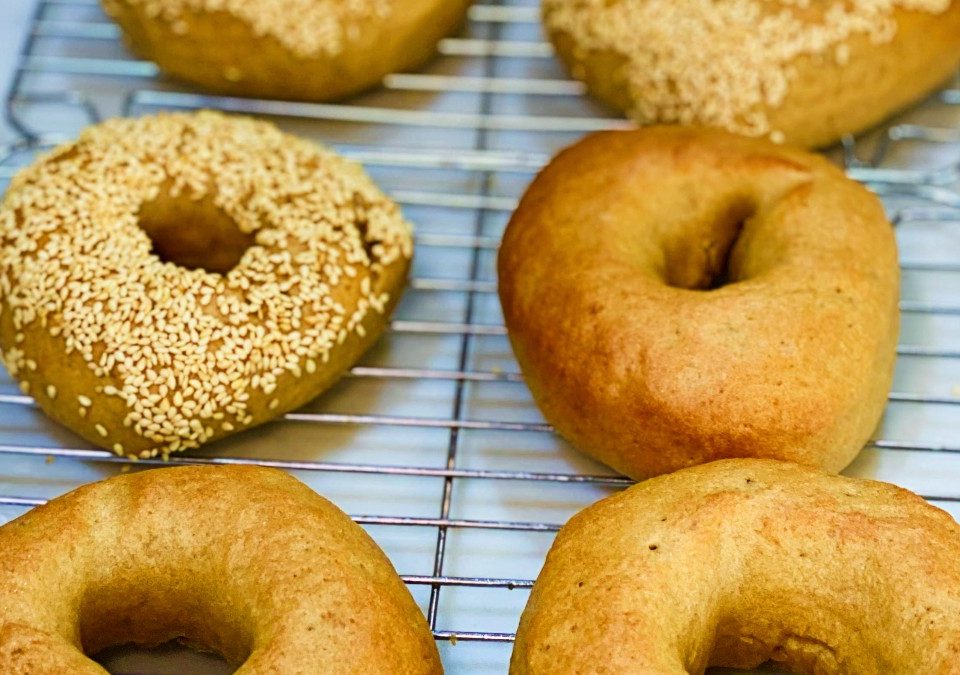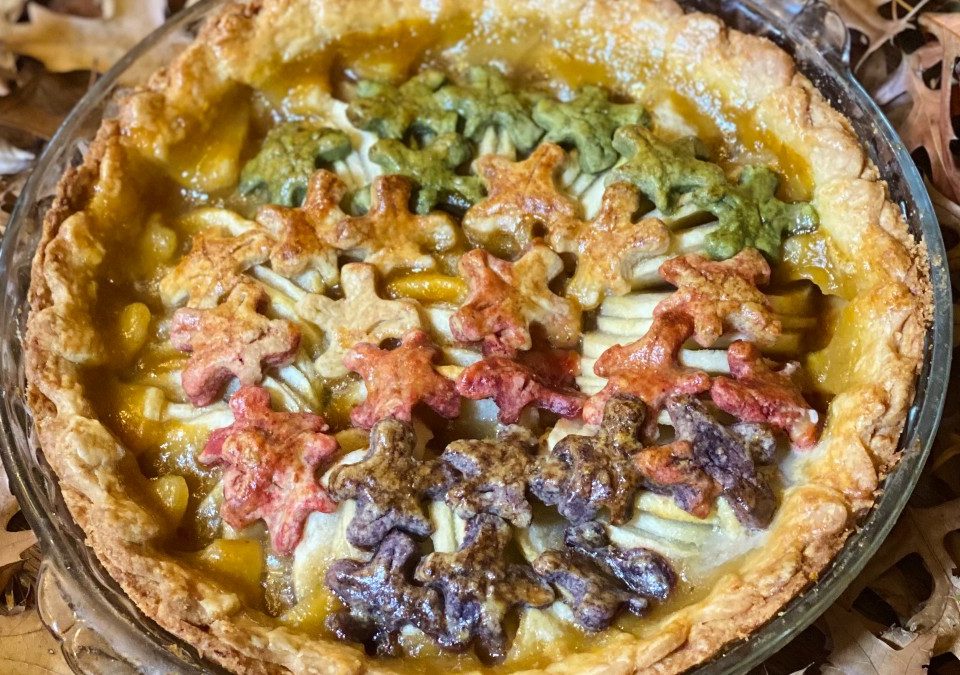Finding Sweet Balance with the Classic Italian Jam Crostata
January 8, 2021Celebrating the Versatile Vinaigrette
February 5, 2021Einkorn Wheat: How an Ancient Grain Could Let You Enjoy Bread Again
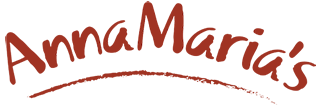
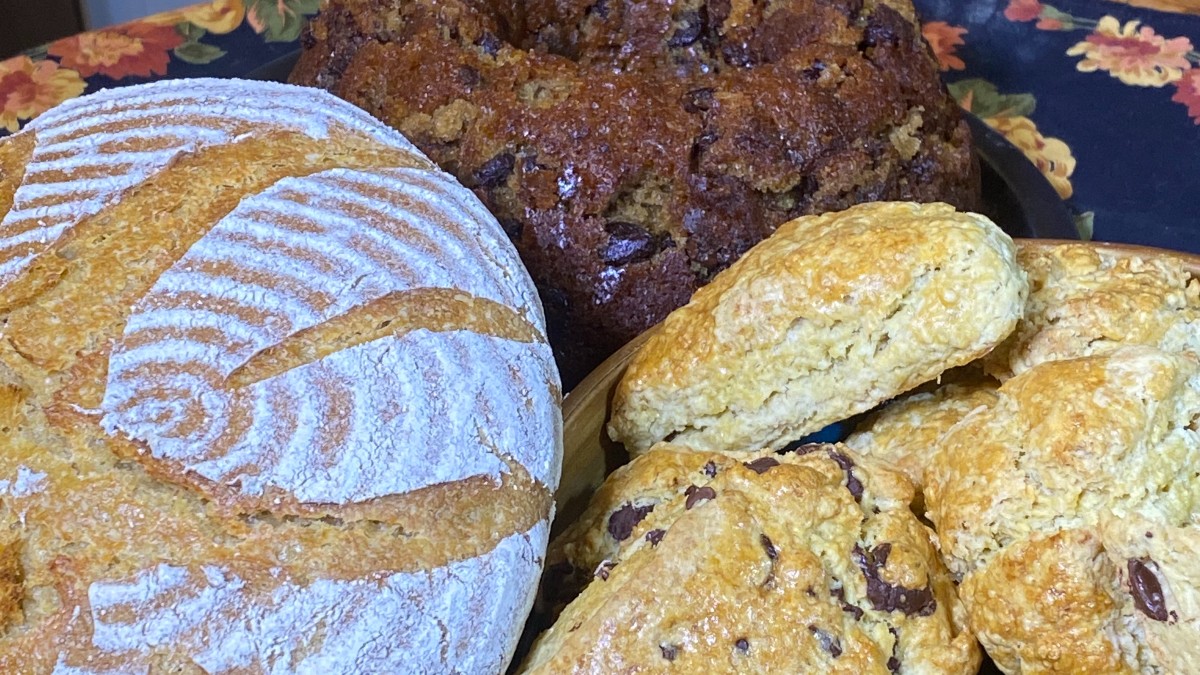
So, You Love Baked Goods but Your Body Hates Gluten? Try Einkorn Wheat.
I’ve got a not-so-secret secret. I am a bread-loving Italian. Could you have guessed?!
But here’s something you may not have known. About ten years ago, I was diagnosed with a gluten allergy. In fact, I had probably always had it, which explains a lot of the digestive issues I had suffered along the way. But, as I got older and my energy dropped, I just didn’t have as much chi to mask the problem.
It became clear I had to change the way I ate. I was heartbroken having to choose between the foods I loved and grew up with and my health. Is there a worse fate for an Italian than developing a gluten allergy?!
Well, there’s a happy ending. A few years ago, I stumbled upon a secret weapon that changed my life: Einkorn wheat. This ancient grain has been my go-to ingredient for making all my tasty Italian baked goods like our Einkorn Panettone without the guilt (or uncomfortable consequences).
Since then, I’ve been known to shout my love for Einkorn from the rooftops because I want everyone to try and love Einkorn as much as I do. So here I am, shouting from my online rooftop to you. Here’s the scoop on Einkorn!
-

- Einkorn savory crostata
-
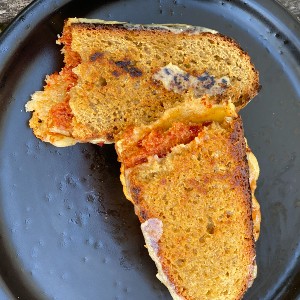
- Einkorn bread sandwich
-
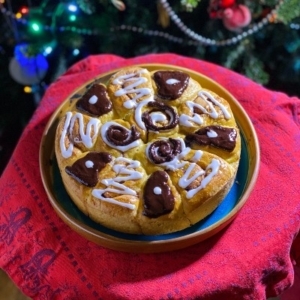
- Einkorn Panettone
What is Einkorn Wheat?
Einkorn wheat is an ancient grain that is high in protein, phosphorus, potassium, carotene, and several other vitamins and minerals. Einkorn is considered the “original wheat.” It is so old, in fact, that a type of einkorn bread was the last supper of Otzi the Iceman, a mummy found preserved in the Italian Alps dating back to 3,300 B.C.
As humans evolved, however, we began to tamper with Otzi’s delicious dinner to make a more “perfect” wheat. The result is centuries of hybridization and a very different plant – the modern wheat we know today.
The original einkorn wheat is still available to us today – and thank goodness for that! This ancient grain is not only delicious but better for our bellies and our bodies. You can find einkorn flour in specialty shops or through my favorite supplier, Jovial Foods.
Einkorn Versus Modern Wheat
One of the most important things to understand about Einkorn wheat is that while it is wheat, it’s quite different from what we know as wheat today. Here are a few ways Einkorn differs from your average bag of white flour:
- Einkorn is an unhybridized ancient grain; modern wheat has been hybridized.
Einkorn wheat that you buy today remains true to its natural form. Modern wheat, on the other hand, has been hybridized and changed over the centuries to make it more profitable. While this has helped farmers, millers, and now big food giants, it has led to digestive issues and sensitivities in many consumers. - Einkorn wheat has more nutritional value than modern wheat.
While modern wheat has been stripped of its nutrients over the years in an effort to make fluffy, pure-white flours, einkorn has kept all its varied nutrients. It is full of fiber, rich in health-boosting carotenoids, and packed with vitamins and minerals. - Einkorn has a different type of gluten than modern wheat.
When modern wheat became hybridized, it went from 14 chromosomes to 42 chromosomes. New genes were added to make the crop more resistant or desirable in various ways. As a result, the gluten content also shifted. Einkorn wheat contains gluten from the A genome, while modern wheat’s gluten profile comes from the D genome. This is why some people who cannot eat modern wheat can eat einkorn wheat without any issues.
Einkorn and Gluten Sensitivities
The most common question I get about my Einkorn wheat recipes is, “Can I eat einkorn if I can’t eat gluten?”
There is no straightforward answer as our bodies all process things differently. But here’s what I can tell you – using Einkorn flour has been a game-changer for me. As a bread-loving Italian, giving up bread and other wheat treats for good was not an option. Before I found Einkorn, I would allow myself to enjoy some of my old favorites from time to time, then pay the consequences later.
With Einkorn flour, I don’t have to compromise. I can make my favorite bread, crostatas, and other baked goods without feeling horrible for days or feeling like I’m hurting my body. In fact, my body thrives on einkorn. I actually feel nourished and energized after enjoying a slice of my Einkorn sourdough.
While I hope you can have this same experience by switching to Einkorn, it’s important to talk with your doctor before trying it if you have a gluten sensitivity or allergy. Unfortunately, if you have Celiac disease einkorn is still off-limits and should be avoided.
Love Bread Again: My Einkorn Sourdough Recipe
-
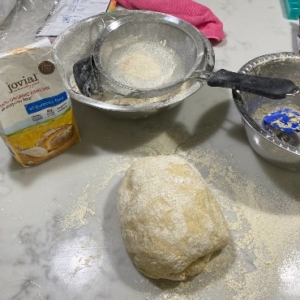
- Kneading dough for Einkorn boule
-
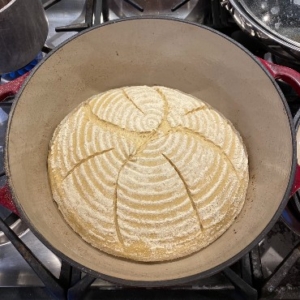
- Scoring Einkorn boule
-

- Lovely finished Einkorn boule
Einkorn bread has not only kept my belly full on many occasions, it has allowed me to keep enjoying the food I love while also caring for my body. Want to try it for yourself? Watch my video where I explain the process and show you step-by-step how to make this delicious, digestible bread.

